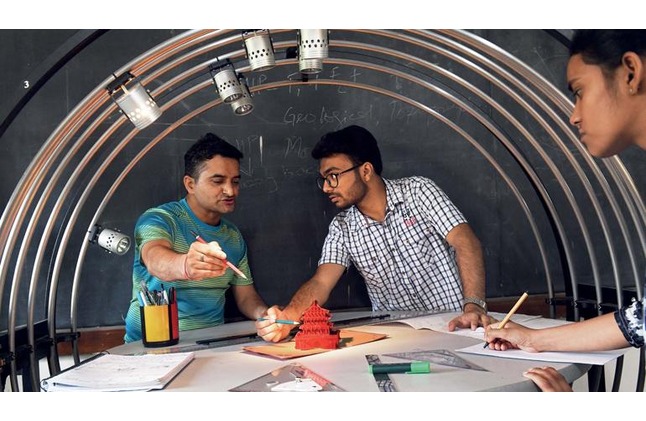
In the ever-changing landscape of real estate, architects have become key drivers of innovation, sustainability, and strategic value. From shaping skylines to redefining urban living, architects play a pivotal role that extends far beyond design. Their work is increasingly seen through a corporate lens where creative vision meets business strategy, compliance, and market trends.
Transforming Real Estate Through Design Innovation
Today’s real estate developers seek more than aesthetically pleasing buildings; they need structures that deliver on functionality, long-term value, and user experience. Architects have emerged as the creative force that bridges this gap, crafting environments that are not only visually compelling but also aligned with evolving lifestyle and workplace needs.
In residential real estate, architectural design focuses on creating homes that offer peace, comfort, and flexibility. Open-plan layouts, energy-efficient materials, and the intelligent use of space are no longer luxuries they’re expectations. Green terraces, community spaces, and natural light are becoming standard as architects reshape urban living.
Commercial architecture is also undergoing a transformation. Modern offices and retail spaces demand adaptability. Architects are meeting this need with modular designs, smart technologies, and efficient spatial planning making properties more attractive to a wide array of tenants while enhancing long-term investment returns.
Sustainability: A Strategic Imperative
Sustainability is now a cornerstone of architectural responsibility, especially in corporate real estate. Architects are expected to integrate eco-conscious practices right from the conceptual stage. This includes passive design elements, energy-efficient systems, green building materials, and infrastructure that reduces water and energy waste.
Such sustainable designs don’t just lower operational costs; they also appeal to eco-conscious buyers and investors. As environmental regulations grow stricter, properties designed with sustainability in mind enjoy added market value, future-proofing, and compliance benefits. This aligns perfectly with developers’ goals to reduce risk and enhance ROI.
Navigating Complexity in Urban Planning
One of the often-overlooked yet critical functions of architects is navigating the complex regulatory environment of real estate development. Understanding zoning regulations, local bylaws, building codes, and environmental impact norms is vital to ensure smooth project execution.
In dense cities like Mumbai, architects help unlock the potential of constrained plots by applying creative solutions that comply with regulations while maximizing land use. Their ability to translate bureaucratic requirements into viable, attractive, and profitable designs is invaluable in today’s competitive property market.
Influencing Market Demand and Consumer Trends
Architects aren’t just responding to market trends they’re setting them. As urban dwellers and corporate tenants prioritize wellness, convenience, and experience, architects are embedding these values into their blueprints. The growing demand for mixed-use developments, community-driven spaces, and biophilic design elements all stem from architectural innovation.
Through visionary work, architects influence what buyers and tenants come to expect. Features like touchless technology, co-working areas, integrated recreational zones, and wellness-focused designs are increasingly becoming the norm because architects are pushing boundaries and redefining what modern spaces should offer.
Shaping the Future of Architecture: TSAP at the Forefront
As the demand for forward-thinking architects grows, so does the need for quality education. Mumbai, a city synonymous with design and innovation, is home to some of the finest academic institutions in this space. With over 80 reputable interior design colleges in Mumbai, aspiring architects have access to a rich pool of learning environments.
Thakur School of Architecture and Planning (TSAP) stands out as one of the top architecture institutes in Mumbai, having established a distinct identity in the field. Since its establishment in 2014, TSAP has been at the forefront of cultivating creative and technically sound professionals in architecture and interior design.
A Leader Among Institutes of Interior Designing
TSAP is not just another institute of interior designing it’s a platform where theory meets practice. The institute offers a Bachelor of Architecture (B.Arch) and a Bachelor of Vocation (B.Voc) in Interior Design, equipping students with industry-relevant skills and a strong academic foundation. The curriculum is designed to foster creativity, critical thinking, and practical application, enabling graduates to confidently step into the professional world.
Mentorship That Matters
A key highlight of the institute is its highly experienced faculty. TSAP’s educators bring a blend of academic prowess and industry experience, offering students mentorship that goes beyond textbooks. Their insights help shape a generation of designers and architects who are not just career-ready but also future-ready.
Whether you’re looking to pursue a career in architecture or explore the nuances of interior design, TSAP is a leading choice among both architecture institutes in Mumbai and interior design colleges in Mumbai, committed to excellence and innovation.
Conclusion
From ideation to implementation, architects play a vital role in shaping the real estate industry. They blend design excellence with strategic thinking, helping developers meet market demands, navigate regulations, and drive value creation. At the same time, educational institutions like TSAP are preparing the next generation of innovators who will continue to push the boundaries of what architecture can achieve.
In a dynamic city like Mumbai, where real estate continues to evolve rapidly, architects remain central to building not just structures but lifestyles, communities, and sustainable futures.